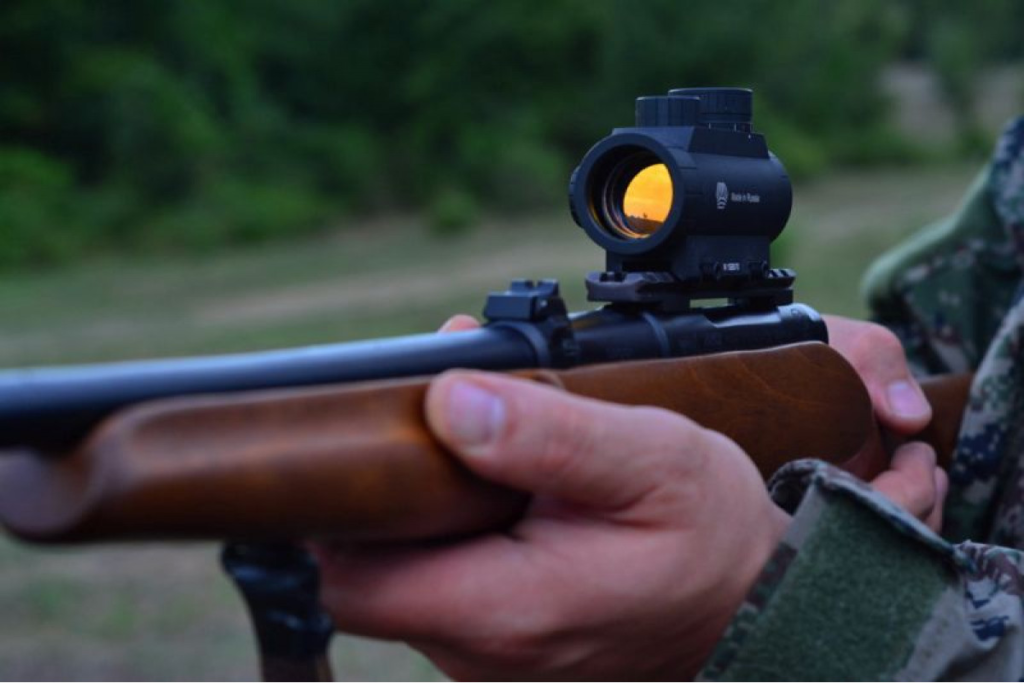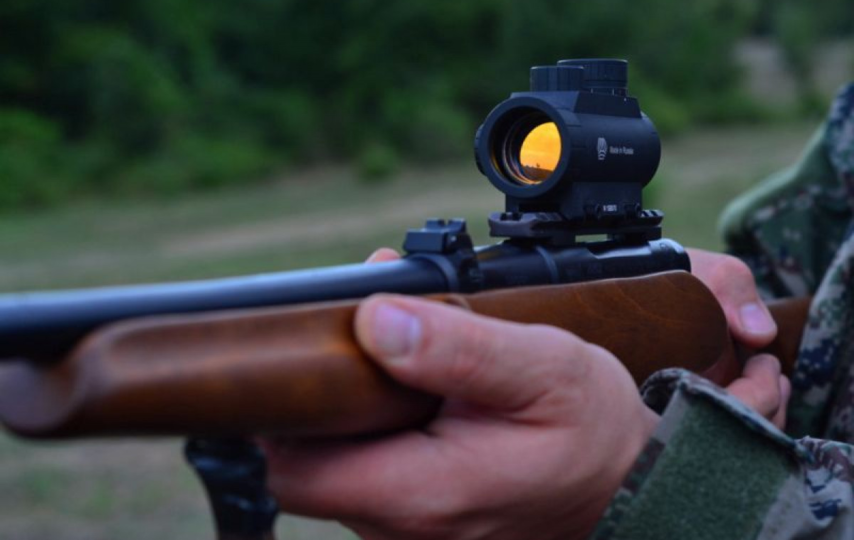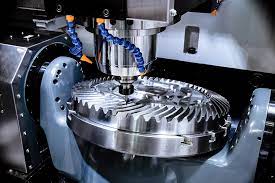Driven hunting, an ancient and widely practiced pursuit of woodland and grassland creatures, demands not only skill but also the selection of appropriate weaponry and its accompanying accessories. Among these, a crucial tool is the specialized telescopic sight, commonly known as a corer.
In the modern market of hunting equipment, a plethora of such devices are available, catering to both seasoned hunters and novices alike. Unlike the limited options of the past, today’s selection includes a variety of choices: simple or electronic, compact or sizable, offered by different manufacturers.
In our endeavor to shed light on this matter, we aim to identify the key criteria to consider when selecting a spotting scope for driven hunting. This insightful guidance will enable you to make a well-informed purchase, ensuring a decision you will not regret.
Types of corral hunting
Let us commence by delineating the various forms of driven hunting, as they play a significant role in determining the attributes of the forthcoming optical instruments. Three primary types exist:
- driving;
- round-up;
- round-up.
In the first scenario, there is a single pursuer and multiple shooters. In a typical round-up, the numbers of both are evenly balanced. During this maneuver, various species of animals or game may be involved. It is essential to note that the corral technique, the second type, is only permissible during daylight hours.
Seasoned hunters abstain from engaging in this pursuit during heavy snowfall or dense fog. Hence, large lenses and high-aperture telescopic sights prove unsuitable for driven hunting.
We recommend visiting opticsbible.com, where you will find a lot of useful information about scopes.
Types of optics
Primarily, one must consider the shooting distance at hand. Depending on the designated or, more often, assigned position, it may encompass expansive landscapes with excellent visibility or dense and arduous terrain. Therefore, the magnification (zoom) holds great significance for a rifle scope tailored for driven hunting.
Incidentally, considerable debate among seasoned hunters revolves around this matter, causing the advice of experienced hunters to diverge significantly. We shall delve into the most prevalent choices of sights for driven hunting.
- Optics with variable 1/4/6x zoom.
- Collimator sights (as a rule of closed type).
- Tactical optics (a variety of collimators) with 3x or 4x zoom.
In approximately half of all instances, each hunter selects a singular option, honing their skills with that specific rifle scope and deeming all others as mediocre choices.
Hence, determining which among the aforementioned optics is more effective and comfortable proves arduous, as it hinges upon individual inclinations. Nevertheless, conducting a test-drive with all these rifle scopes is undeniably beneficial. We shall delve into a comprehensive analysis, considering the fundamental principles of this form of hunting.

Optics with variable zoom
Seasoned anglers firmly uphold the belief that scopes designed for driven hunting ought to possess variable magnification. This pursuit is not a solitary expedition where one possesses precise knowledge of who, how, and under what conditions the hunt will transpire.
In our scenario, the lead figure in the corral determines the parameters. Consequently, one might find themselves in both well-exposed terrains and locations that necessitate engagement at close proximity. Thus, the requirement for both low and high magnification, ranging from one to six times.
Furthermore, it is pertinent to emphasize that corral scopes should commence at 1x or 1.5x. This facilitates aiming at point-blank distances, simplifying the process significantly. In this instance, the optics function as a collimator sight, enabling one to take aim without straining their eyes, thereby doubling the field of view.
Features of optics
When considering the highest magnification for a corral scope in hunting, it is advisable to refrain from selecting sights exceeding 10x. The art of sniping, per se, is not entirely suitable in this context, for the agile quarry remains in constant motion. A substantial zoom (beyond 10x) implies engagement with relatively stationary targets.
The ideal options lie within the realm of 4x and 6x. If one intends to employ the sniper’s chamber within the corral, it would be prudent to equip oneself with bipods, tripods, and other apparatus to facilitate long-range firing.
Nearly all driven optics boast compact dimensions and lightweight construction, which is a tangible advantage within this hunting domain. The main lens diameter typically ranges around 24 mm, a modest proportion in comparison to other conventional sights.
Optionality
For those who exhibit equal proficiency in wielding a fly, engaging with a target, and harnessing the power of optics, it would be wise to consider the presence of swift-detach mounts in the latter. Although they come at a significantly higher price compared to the “eternal” mounting variants, they greatly enhance the fishing process.
As supplementary features, seasoned hunters often advocate for devices adorned with illuminated reticles. While the hunt unfolds amidst the daylight, such assistance would prove beneficial for individuals with visual impairments, rendering the pursuit more effortless.
Collimator sights
The utilization of such apparatus is thoroughly justified when operating within limited distances and under less-than-optimal visibility. Seasoned corral hunters highly recommend novices to acquaint themselves with this form of hunting through the use of collimator sights.

However, intricacies exist within this domain as well. A collimator sight excels when paired with smoothbore firearms, such as shotguns and hunting carbines. Conversely, its presence on rifles proves to be an impediment rather than an aid. The need for zoom on rifles is nonexistent and serves only to confound. Furthermore, it is unlikely that the possessor of a smoothbore rifle will partake in long-range shooting. Nevertheless, some hunters opt to employ collimators universally, irrespective of the circumstances, thus highlighting the subjective nature of taste, habit, and accumulated expertise.
Universal kits also exist, wherein an optical sight and a collimator function in unison. The latter is affixed for short distances, while the former swiftly assumes its position for longer ranges. However, it is worth noting that the cost of such kits is quite substantial. As previously mentioned, quick-release equipment does not come cheap.
Tactical sights
This represents a fusion between traditional telescopic sights and collimator apparatus, embodying a hybrid creation. Deployed extensively in military endeavors, these “tactical” instruments, renowned for their efficacy and adaptability, have found their purpose transposed into the realm of civilian pursuits, specifically hunting.
This equipment exhibits compact dimensions, and its sight mechanism operates akin to collimators. However, in contrast to the latter, “tacticals” incorporate specialized zoom lenses, albeit not reaching the caliber of classical optical sights. The pinnacle of magnification achievable with tactical equipment stands at 4x.
Distinctive features of optics
Sights of this nature are tailored for operations spanning short to medium distances. An array of configurations and supplementary components presupposes a considerable degree of expertise on the part of the user in navigating such apparatus. Hence, in the hands of a novice, such a sight would yield little benefit, as they would struggle to fully unlock its potential and stumble at every turn. Conversely, seasoned hunters often avail themselves of such advanced equipment, rendering the hunting process substantially more effortless for both themselves and their companions.
Throughout the course of the hunt, one encounters a diverse array of game and animals. In the case of a majestic moose, its presence can be discerned from afar, affording one the opportunity to take aim with precision. An accurate shot not only ensures the safety of the hunter, but also guards against accidental harm to others.
When pursuing wild boar, the terrain tends to be overgrown, and encounters occur at close quarters, allowing minimal time for meticulous aiming. The optics employed must thus be suitable for tracking and engaging any driven creature, displaying practicality in their design. Alternatively, one’s weapon can be equipped with a universal mount, facilitating swift interchangeability between zoom lenses, collimators, and tactical attachments.
To summarize
In the pursuit of a corral scope, the foremost consideration lies in the capacity to adjust magnification during the act of aiming. For neophytes, high-powered optics should not be sought after. In this regard, collimators present the most favorable choice.
Furthermore, it is essential to assess the weight of the scope in your hand. Advanced and versatile optics may bear a substantial burden, yet they find their utility in alternative forms of hunting. Considering that you will embark on a considerable journey to reach your destination, every gram will assume the weight of a kilogram, particularly during wintry expeditions.
Likewise, it is ill-advised to hastily acquire an intricate tactical sight while still acquainting yourself with the fundamentals. The employment of such equipment demands a seasoned approach that can only be acquired through experience. Though tactical scopes possess remarkable capabilities, their mastery necessitates a measured progression, as leaps and bounds will only find their resolution through firsthand encounters.








